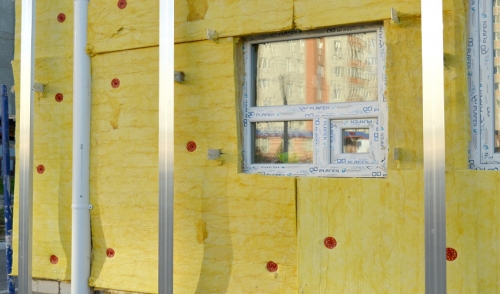
Insulation Education
Since we all spend most of our time in our homes, it makes sense to want to be as comfortable as possible. Insulation does that, plus it makes this comfort affordable by increasing our home’s energy efficiency. No matter what your choice of material for insulation, they all basically work in the same manner. Insulation traps air in small pockets, which slows the exchange of heat from the inside and outside the home. This process can be thought of as resistance, which translates to the R-value that insulation is commonly measured with. The higher the R-value, the higher the resistance. This leads to lower utility bills in the winter and the summer.
As an example of appropriate R-values, attics require a range between R-30 and R-49, while 2 x 4 walls should maintain between R-13 and R-15. Insulation and floors should have an R-value ranging between R-19 and R-30. Refer to the chart on EnergyStar.gov for more information on what R-Values are recommended for the region in which you live.
The manner in which heat flows, can affect your home all year long. During the summer, when heat flows through the exterior walls into the home, it is referred to as heat gain. In winter, it’s the opposite. Heat flows from the warm inside to the colder outside, which is known as heat loss.
Your home’s building envelope, which is comprised of the floor, walls and roof that protect your home from the elements, requires more than just thermal insulation to be effective. Any air leaks that can cause infiltration will expedite the exchange of heat, reducing the effectiveness of your insulation. It’s because of this that the installation of insulation is just as important as the choice of materials you make.
Insulation comes in many forms. The most common, of course, are fiberglass batts and rolls, which are often used in walls and attics. Fiberglass comes both faced an un-faced configurations. Faced insulation has a paper vapor barrier that helps prevent moisture buildup, which then can cause mold and mildew growth. Other popular types of insulation are low-density polyurethane foam, spray foam, and blown-in fiberglass. Spray foam has been an increasingly popular choice, since it gives an air, moisture, and thermal barrier--all at the same time. Rigid foam sheathing is very versatile and can be used in both interior and exterior applications.
Some common tools used to install insulation are:
- Tape measure
- Utility knife with plenty of extra blades for cutting the insulation.
- A straight edge is helpful when cutting insulation. For this, a scrap 2 x 4 will work just fine.
- A tool for fastening the insulation, such as a staple gun.
- Dust masks and safety goggles are very important. Especially when using blown in and fiberglass insulation.
- Long sleeve shirts, long pants and gloves are necessary to avoid skin contact.
No matter which type of insulation you are shopping for, these facts hold true: The amount of insulation that you’ll need will depend on things such as your local climate, the heating system in your home, whether it is a DIY or a professional project, and your budget. If you have any questions about the many types of insulation or need advice on installing it, stop in and we’ll be glad to help.
